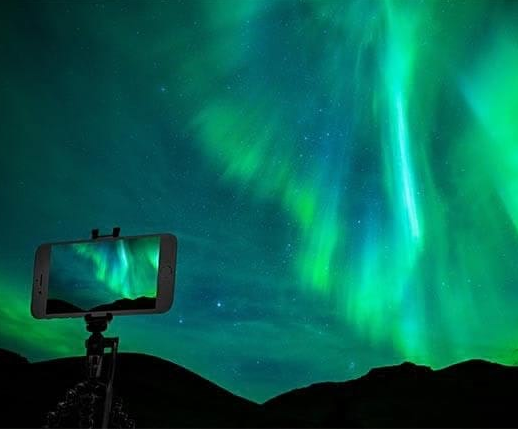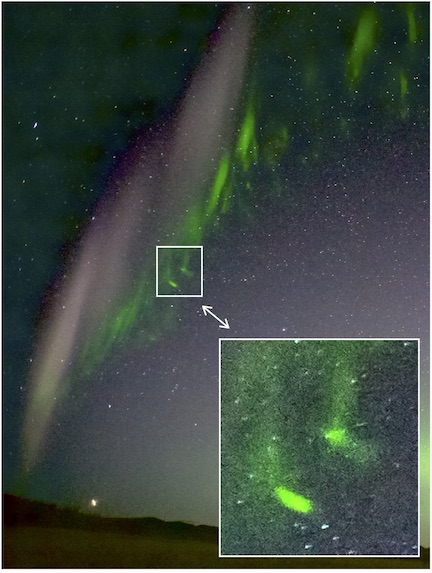SemeterLab
The plasma that surrounds us.

Using your smartphone to study the Earth's ionosphere
The GPS signals on your smartphone contain valuable information about the plasma environment that envelopes our planet. Learn more about how you can mobilize your smartphone to contribute to ionospheric research!

Mysterious Green Streaks Under STEVE
The green pillars of light that form next to STEVE-type auroras resemble auroral rays. But observations of narrow filaments of light streaking across the sky underneath suggest a unique phenomenon. (DOI:10.1029/2020AV000183)

The Atmosphere as Particle Detector
The aurora has long served as a proxy for understanding dynamics in the magnetized plasma surrounding the Earth. We have identified a new region of small scale spatial structure in the auroral oval produced by high energy electron precipitation from the outer edges of the Van Allen radiation belts -- the concentric bands of energetic plasma encircling Earth. (DOI:10.1029/2019GL083908)
Sunspots Create Giant Rings in the Ionophere
During the August 2017 total solar eclipse, there were two active regions on the solar disk, which were successively covered as the moon crossed the sun. The abatement of ionizing X-rays from these regions produced ring-shaped patterns in the ionosphere, which we imaged using signals from a global network of GPS receivers.(DOI:10.1029/2017GL076771)
Leveraging the Planet Labs Satellite Network for Auroral Research
Planet Labs Inc. has deployed a constellation of hundreds of small satellites to images the Earth. We have used data from their on board magnetometers to study the electric current systems that power the aurora. This research demonstrates the power of government-commercial partnerships in novel space research projects.(DOI:10.1029/2018JA025966)

The ANDESITE Cubesat Mission: Preparing for Launch
The ANDESITE satellite has been delivered to Rocket Lab for launch on their Electron rocket. ANDESITE will deploy a network of 8 free-flying magnetometers aimed at studying small scale variations in the geomagnetic field produced by space weather (JoSS, Vol. 09, No. 01).